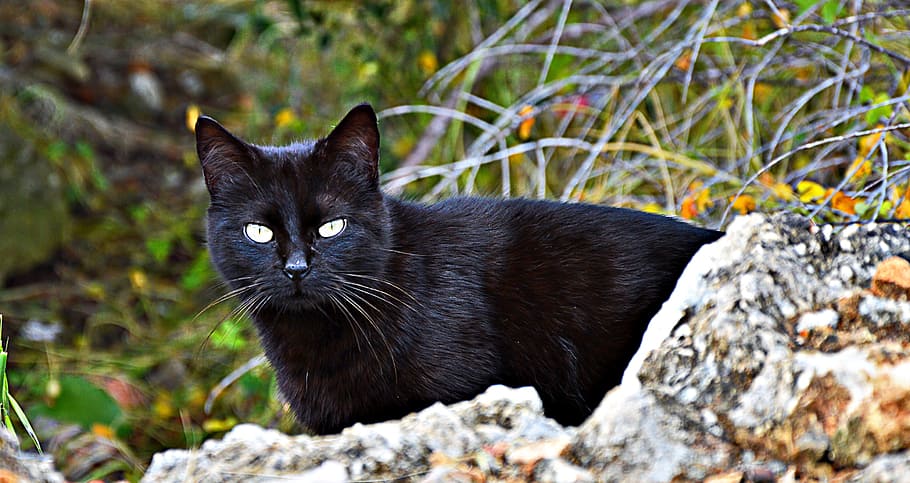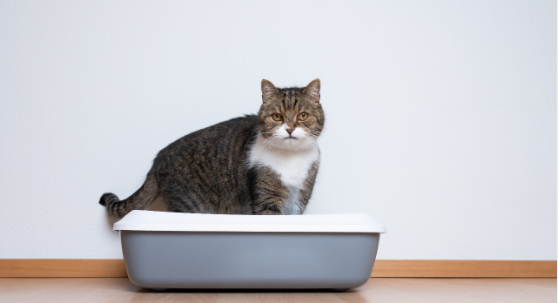Unravelling Black Cat Myths?
Black cats have been a topic of fascination for centuries. Many people believe that black cats bring bad luck, while others think of them as mysterious and alluring creatures. One question that often comes up is whether black cats are rare or not.
The Explanation of the Topic – Are Black Cats Rare?
Black cats are frequently seen in pop culture and media, from movies like Hocus Pocus to classic literature such as Edgar Allan Poe’s “The Black Cat.” However, despite their prevalence in popular media, there is still a common misconception that black cats are rare compared to other coat colors. This may be due to the superstitions surrounding them or simply a lack of understanding of feline genetics.
The Brief History of Black Cats and Their Association with Superstition
The association between black cats and superstition can be traced back to ancient civilizations that believed they were linked with witches and dark magic. During the Middle Ages in Europe, black cats were often thought to be companions of witches, which led to their persecution and widespread killing during witch hunts. Even today, many people still associate black cats with bad luck or evil omens.
Some cultures even believe that if a black cat crosses your path at night, you will die within 24 hours! These beliefs have contributed to the persistent notion that black cats are rare or hard to come by.
The Purpose of the Article – To Explore the Rarity of Black Cats and Dispel Any Myths About Them
This article aims to explore whether or not black cats are actually rare compared to other cat coat colors. We will delve into the genetics behind feline coat colors and debunk common myths about them bringing bad luck or being associated with witchcraft. By doing so, we hope to provide readers with a better understanding of black cats and encourage more people to adopt them as pets.
Black Cats in Pop Culture
Examples of Famous Black Cats in Movies, TV Shows, and Books
Throughout the years, black cats have been a popular choice for fictional characters in movies, TV shows, and books. Some of the most famous examples include Salem from Sabrina the Teenage Witch, Bagheera from The Jungle Book, and Felix the Cat.
Additionally, there are many other lesser-known black cats such as Lucifer from Cinderella and Jiji from Kiki’s Delivery Service. These fictional characters have contributed to a significant portion of pop culture references to black cats.
One notable example is Salem from Sabrina the Teenage Witch. Salem is not only a popular character but also has become a symbol for black cats in pop culture.
He portrays an intelligent yet sarcastic character that is often more human-like than feline. In contrast, Bagheera from The Jungle Book is a more realistic representation of a black panther – sleek and powerful – adding to his appeal as both mysterious and powerful.
Discussion on how Pop Culture has influenced People’s Perception of Black Cats
Pop culture has played an enormous role in shaping people’s perceptions of black cats – both positive and negative. While some see them as mysterious creatures with immense power like Bagheera or Salem; others may associate them with villains or bad luck like Jiji (initially) or Lucifer. In cartoons especially, they are commonly used when portraying witches or other supernatural beings.
However, despite this portrayal in media, it’s important to remember that these are all just fictional representations that do not reflect reality. Another factor contributing to people’s perception of black cats is their association with Halloween due to their coloration matching the holiday aesthetic.
Yet again though this association shouldn’t be taken too seriously as it’s just another media-driven stereotype without any solid basis. Therefore, it’s crucial to keep in mind that pop culture representations are not always accurate, and we should avoid stereotyping black cats.
Genetics of Black Cats
The Science of Coat Colour
To understand why black cats may or may not be rare, it’s important to first understand the science behind cat coat colour. A cat’s coat colour is determined by the genes inherited from its parents. These genes control the production of pigment in the fur, which gives it its characteristic colour.
There are two different types of pigment that can produce different colours: eumelanin (which produces black or brown) and phaeomelanin (which produces red or orange). The genes responsible for producing these pigments can be dominant or recessive, meaning that a cat may inherit one gene from each parent that determines their coat colour.
Black Cats: Less Common but Not Rare
While black cats are often thought of as rare, they are actually less common than other colors like tabby or calico. This is because the gene responsible for producing black fur is recessive compared to other dominant colours. For a cat to have a solid black coat, both parents must carry the gene for black fur and pass it on to their offspring.
If only one parent carries the gene, their offspring may still have some black markings but not a completely solid coat. Additionally, different breeds of cats have different tendencies towards certain coat colours due to selective breeding practices over time.
For example, Bombay cats were bred specifically to have a sleek and shiny all-black coat, while Siamese cats tend to have lighter-colored coats with points of darker fur around their face and paws. However, despite being less common than other colours and having varying trends among different breeds, black cats are not necessarily rare in general.
Superstitions Surrounding Black Cats
Overview on the history and origin of superstitions surrounding black cats
Black cats have been associated with superstition and folklore for centuries. In ancient Egypt, they were worshipped as sacred animals, but in medieval Europe, they became associated with witchcraft and evil.
The widespread belief that black cats bring bad luck or are a sign of impending doom is still prevalent today. One theory behind this superstition is that during the witch hunts of the Middle Ages, black cats were often seen as companions to witches.
As a result, people believed that owning a black cat was a sign of being a witch or involved in dark magic. These beliefs were perpetuated by legends such as the story of the Bell Witch in Tennessee, which tells of a witch who took on the form of a black cat to torment her victims.
Debunking common myths about black cats bringing bad luck or being associated with witches
Despite their association with superstition, there is no evidence to suggest that black cats are any more likely to bring bad luck than any other colored cat. In fact, many cultures around the world consider black cats to be good luck charms. For example, in Japan, it is believed that owning a black cat brings good fortune and health.
Similarly, while it is true that some witches may have owned or used black cats in their rituals during medieval times, there is no evidence to suggest that all or even most witches did so. Many modern-day witches also reject this association and instead, see cats (of all colors) as symbols of intuition and independence.
While superstitions surrounding black cats may persist in some cultures today, it is important to recognize them for what they are – baseless beliefs rooted in fear and misunderstanding. Black cats are just as deserving of love and respect as any other colored cat, and their association with superstition should not deter anyone from adopting one as a beloved pet.
Adoption Rates for Black Cats
Statistics on Adoption Rates for Different Colored Cats
According to a study by the American Society for the Prevention of Cruelty to Animals (ASPCA), black cats are less likely to be adopted from animal shelters than cats of other colors. In fact, black cats and dogs have the lowest adoption rates across all animal shelters in the United States. The ASPCA reported that only 31% of black cats were adopted from shelters, compared to 37% of white cats and 39% of other-colored cats.
This low adoption rate could be attributed to various reasons, including superstitions surrounding black cats and a lack of visibility in animal shelters. Additionally, another study conducted by Petfinder found that black animals stay in shelters longer than animals of other colours.
The study found that it takes an average of 12.5 days for a black cat to be adopted, compared to just 9.5 days for other colored cats. This could lead to overcrowding in animal shelters and limited resources for caring for these animals.
Discussion on Why Black Cats May Have Lower Adoption Rates Compared to Other Colors
One reason why black cats may have lower adoption rates is due to the superstitions surrounding them. In many cultures, black cats are associated with bad luck or even witchcraft, which can make potential adopters hesitant to bring them home. Additionally, some people believe that taking care of a dark-colored cat requires more effort because their fur shows up more prominently on furniture and clothing.
Another possible reason why black cats have lower adoption rates is due to their appearance in comparison with other colors. Lighter-colored pets tend to stand out more in photographs or through glass cages which can catch potential adopters’ attention easier than darker-colored pets like black ones who may not appear as striking at first glance.
While there is no biological reason for black cats to be rare or less desirable as pets, they continue to have lower adoption rates in animal shelters. By understanding the reasons behind these trends, animal shelters can take steps to increase visibility and educate potential adopters about the benefits of adopting a black feline companion.
Conclusion
Summary of Key Points Discussed in the Article
Throughout this article, we have explored the question of whether black cats are rare. We have delved into the genetic makeup of felines, the superstitions that surround black cats, and their adoption rates.
While black cats are less common than other colors, they are not necessarily rare. Pop culture has influenced people’s perception of black cats, making them appear rarer than they actually are.
We also debunked common myths about black cats and their association with witchcraft or bad luck. The truth is that these superstitions have no basis in fact and should not impact people’s decision to adopt a black cat.
We discussed adoption rates for black cats and why they may be lower compared to other colors. This is likely due to a combination of factors such as pop culture stereotypes and the fact that physical features like eye color tend to be more important for potential adopters than coat color.
Final Thoughts on Why People Should Consider Adopting Black Cats
While coat color may be a factor in choosing a pet, it should not be the only one. Black cats make wonderful companions just like any other feline with different coat colors. They are just as playful, loving, and loyal as any other cat breed.
It’s important for people looking to adopt a furry friend to look beyond superficial features such as coat colour or age and instead focus on personality traits that match their own lifestyle and needs. By doing so, they open themselves up to finding their perfect companion regardless of what they look like on the outside.
So next time you consider adopting a pet from your local shelter or rescue group – don’t shy away from those beautiful ebony felines – give them a chance! Not only will you gain an amazing companion but also help break down stereotypes surrounding these amazing creatures!




